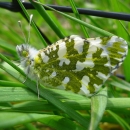Our Services
We offer a variety of services to support plant, fish, and wildlife conservation:
- Section 7 Consultation and Environmental Reviews
- Habitat Conservation Plans
- Coastal Program
- Partners for Fish and Wildlife
- Natural Resource Damage Assessment
- Voluntary Habitat Conservation
- Urban Wildlife Conservation Program
- Conservation Education Program
Are you seeking section 7 consultation? To get started, your first step is to download your species list using the Information, Planning, and Conservation (IPaC) tool. This will be tailored to your project, helping you explore the landscape and learn how to minimize potential conflicts with natural resources. Starting with IPaC IPaC
Information for Planning and Consultation (IPaC) is a project planning tool that streamlines the USFWS environmental review process
Learn more about IPaC will also establish the record number for your project with the Service. To be most efficient, we strongly encourage you to contact us directly for early coordination before submitting your consultation request.








